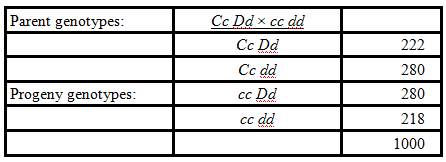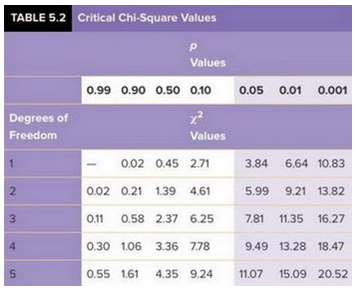If only 100 progeny had been counted and the same proportions of progeny genotypes observed, how would the p value and the conclusion drawn about linkage change?
A dihybrid testcross is made to determine if genes C and D are linked. The results are shown in the table.


A) The p value would increase, and the likelihood of linkage decreases.
B) The p value would decrease, and the likelihood of linkage increases.
C) Neither the p value nor the likelihood of linkage would change.
D) The p value would decrease, and the likelihood of linkage decreases.
A) The p value would increase, and the likelihood of linkage decreases.
You might also like to view...
Which of the following intermediate filament proteins is incorrectly matched with the tissue in which it is found?
A) cytokeratins-epithelial B) desmin-smooth muscle C) vimentin-mesenchymal D) nestin-connective E) GFA protein-nervous
What is an advantage of using the lac regulatory region to control the expression of exogenous proteins in bacterial cells?
A) Expression can be controlled by the addition of an inducer to the media. B) This regulatory region functions in both bacterial and mammalian cells. C) By using this regulatory region, eukaryotic genomic DNA can be expressed in bacterial cells. D) Host regulatory mechanisms are not effective when this regulatory region is cloned into a plasmid.
Which of the following statements about transgenic plants is CORRECT?
a) Transgenic plants require many years to be produced. b) Intermediate species are required for transgenic plants to be produced. c) Transgenic plants have been shown to have no detrimental effect on the environment. d) Transgenic plants contain genes from more than one species. e) Transgenic plants have been used successfully for insect resistance but not herbicide resistance.
The nucleolus organizer region (NOR) is responsible for production of what type of cell structure?
A) ribosome B) endoplasmic reticulum C) nucleolus D) mitochondria E) chromatids